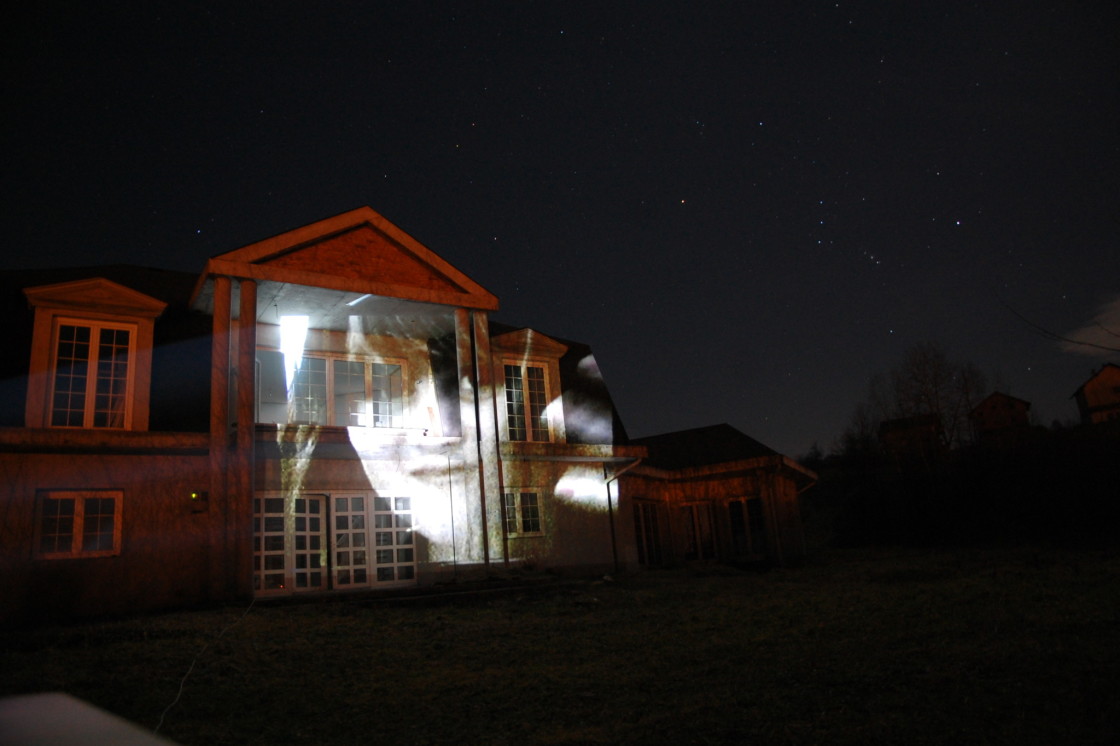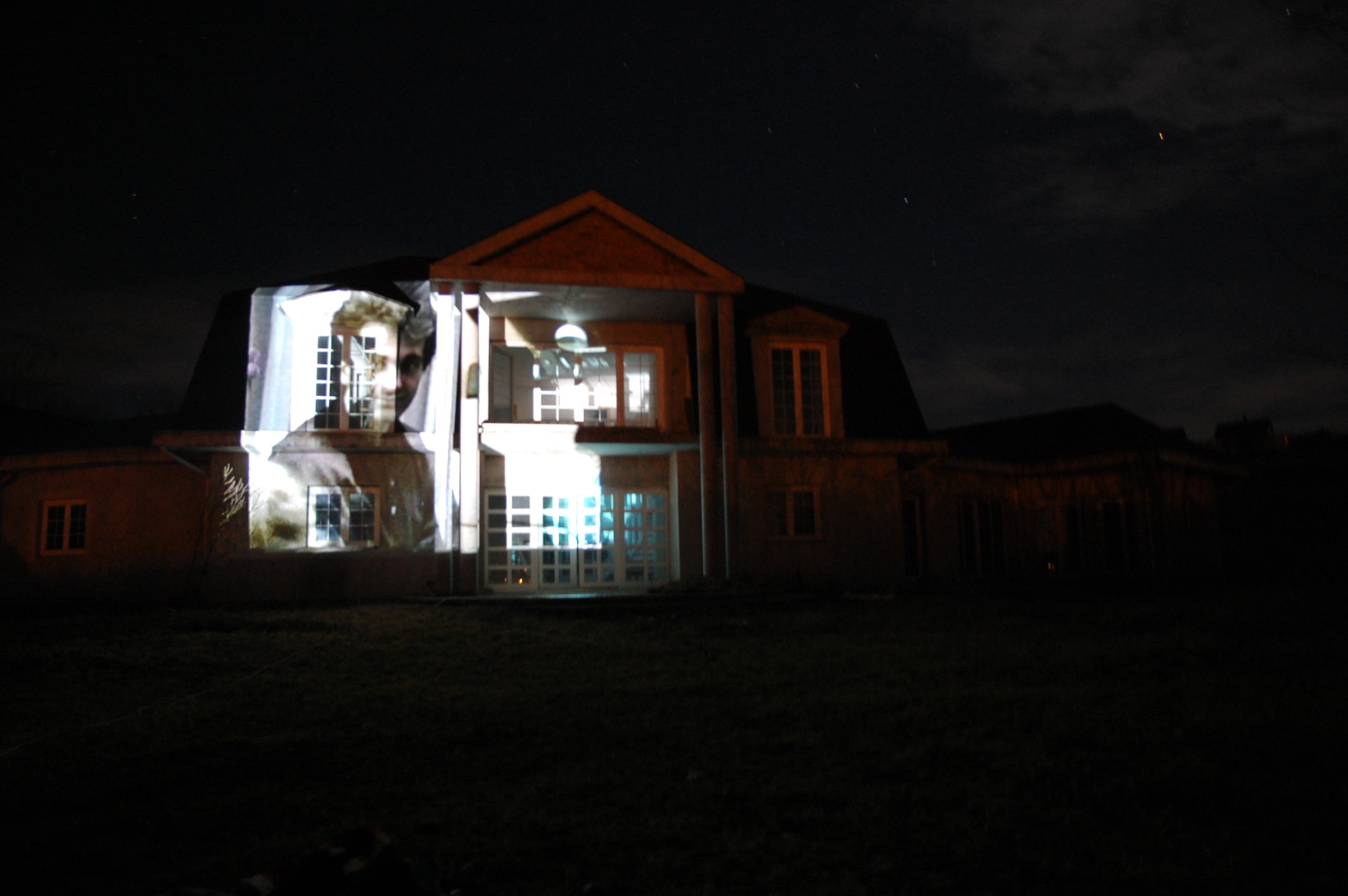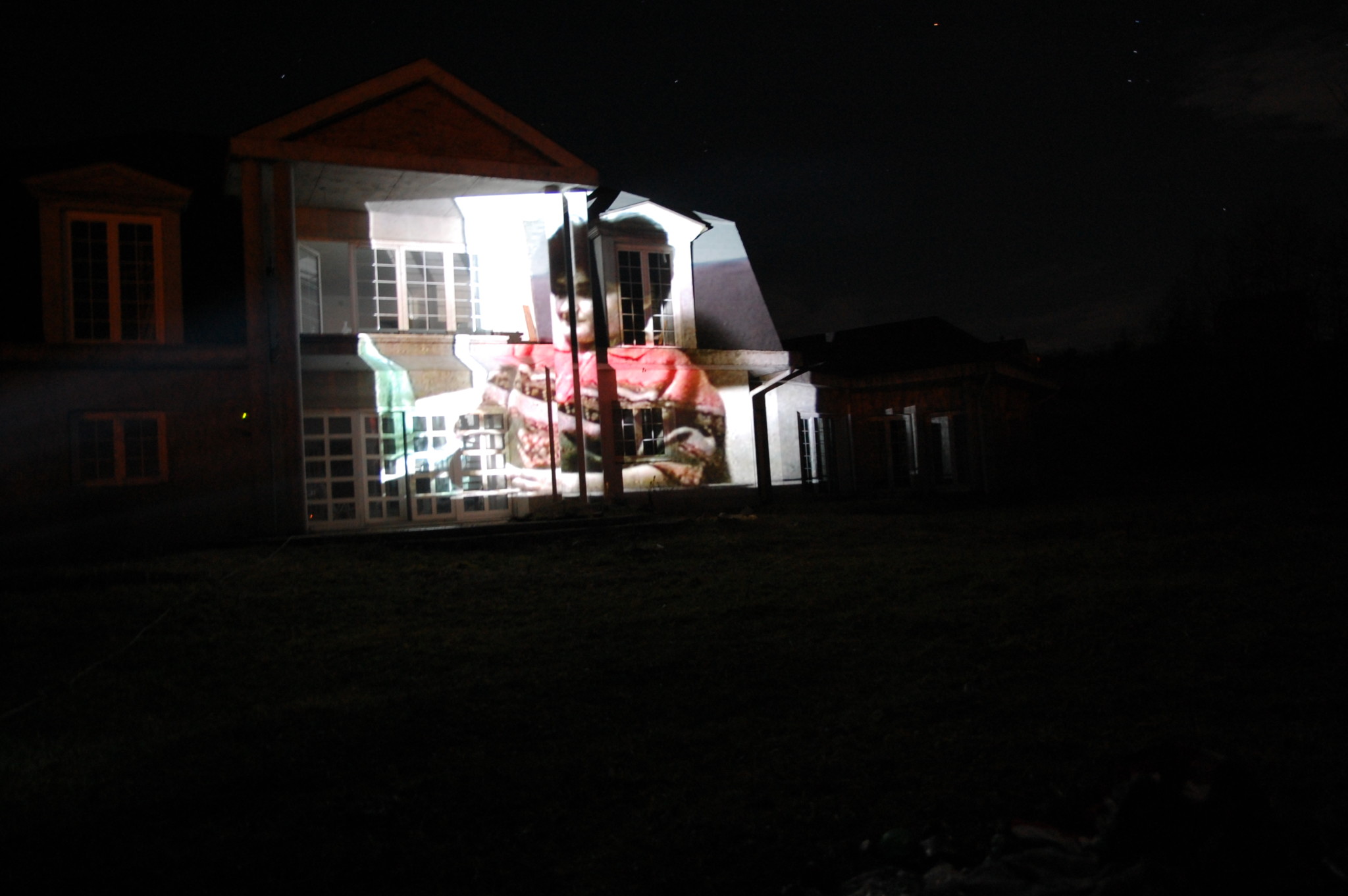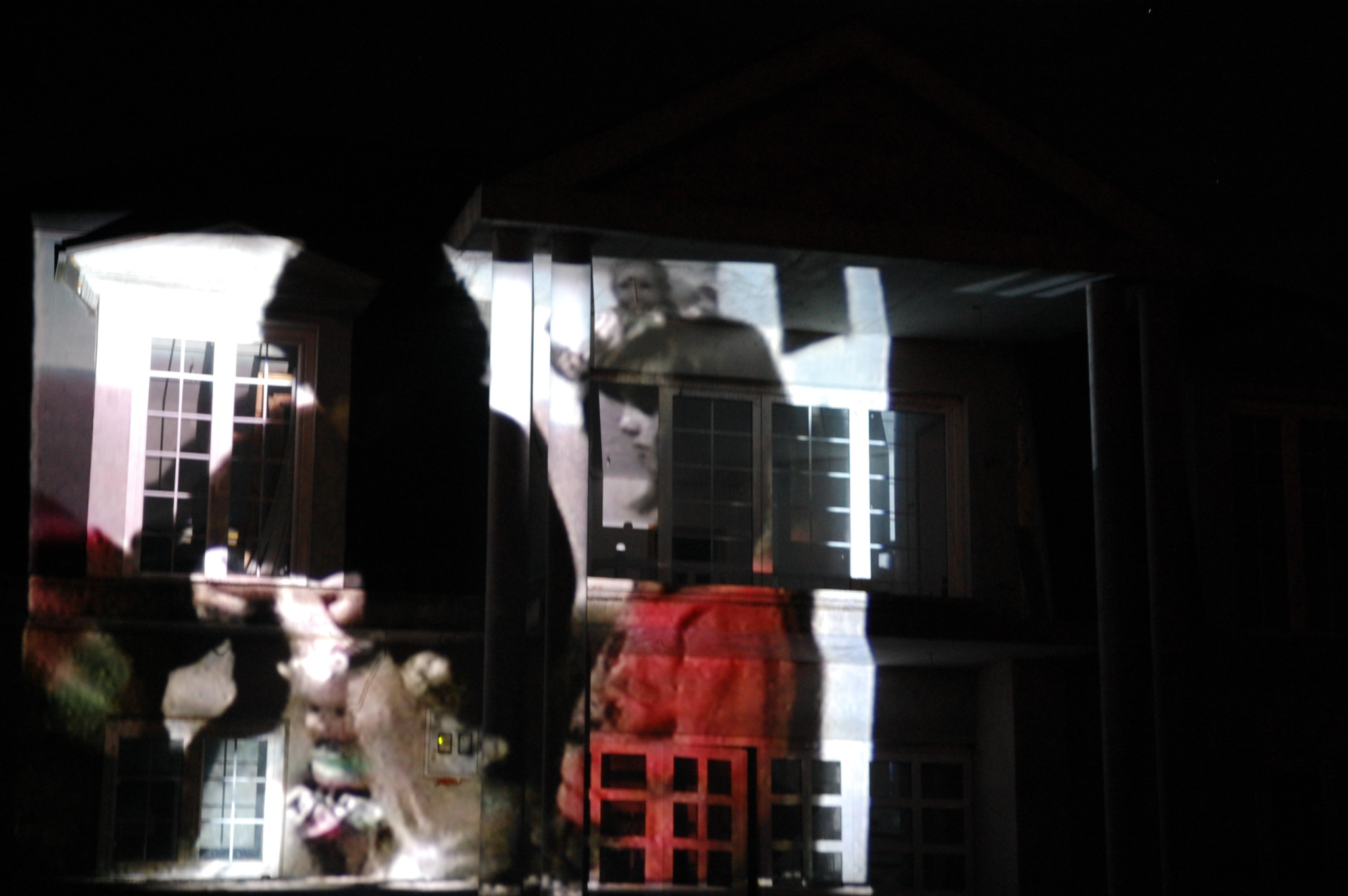1992-2002 (or Second-class Citizens) is a video projection on the facade of the family house.
The work confronts two realities: The first is shown in the video that was recorded in 1992. Audio Video recording (60′) was made in one room, the 20 m2 apartment in Munich, with a total of 9 protagonists, members of one family. The second one is building, a family home that was built between 2002 and 2005. Both the first and second reality are the symptoms of time in which they occurred. In the first one family makes a decision about staying in or leaving Yugoslavia at the beginning of the 1992. and in the end decided not to become a “second class citizens” and after a brief visit to Germany, goes back home. Although this decision is not directly displayed in the video, it is omnipresent in visually understanding of the space and people who are shown in the film. The house, tells about the same family 10 years later. This is a large building of 600m2 which stands empty. The family no longer exists, although the material conditions for it are established. The work presents intimate moments of one family. However, it is impossible not to attribute a broader characteristics of the times and situations in which they arise. Moving from the individual, from the local towards the the global, work carries the parameters of a decade in which they occurred. It shows enormous social and economic changes that happened in Balkans in the period from fall of socialism till the introduction of free market. The decision on migration from the early 1990s and the economic prospects of the territory of Bosnia and Herzegovina at the beginning of the 2000s, as well as its sudden fall are becoming more apparent and the primary focus of this work.




